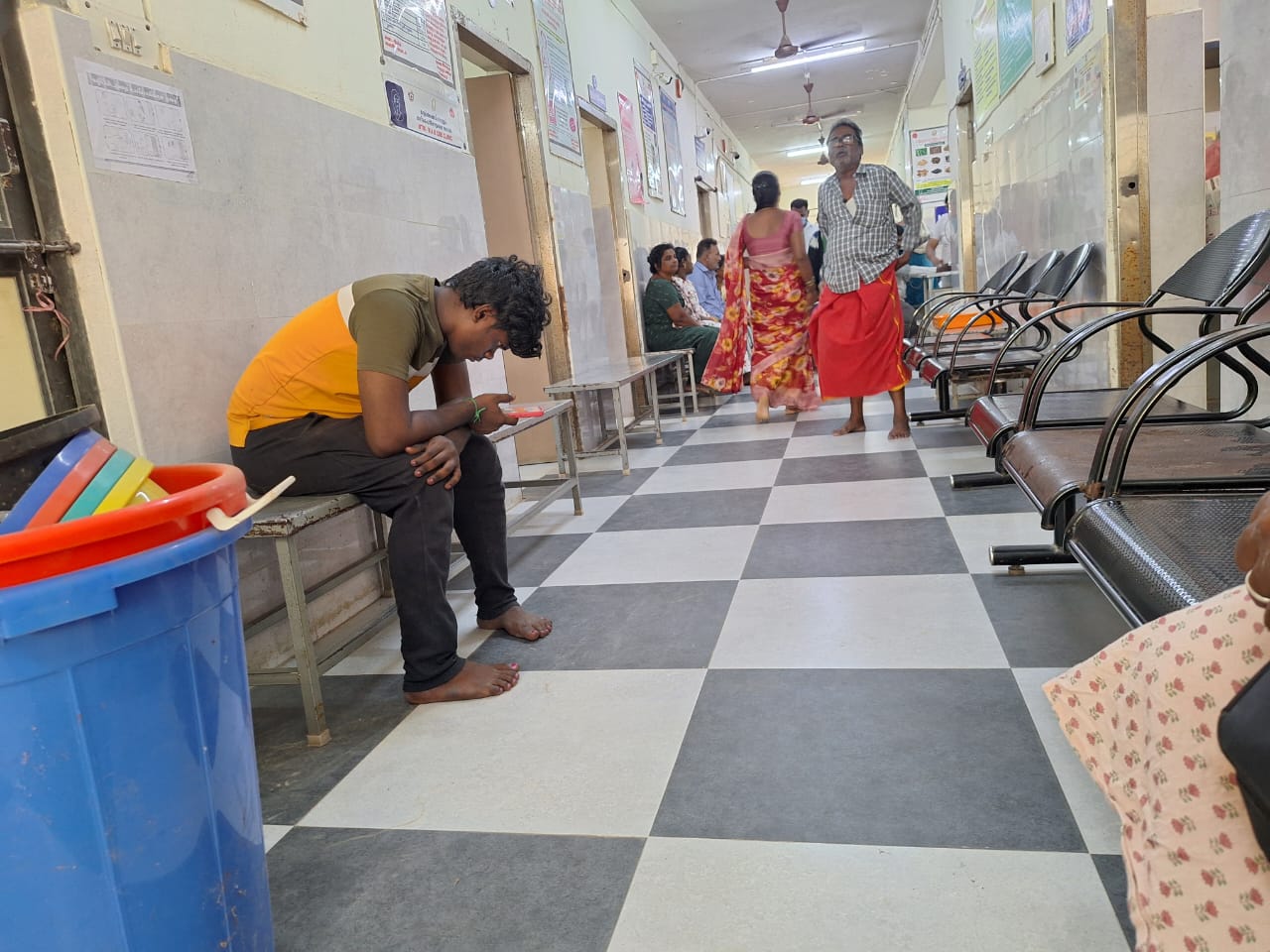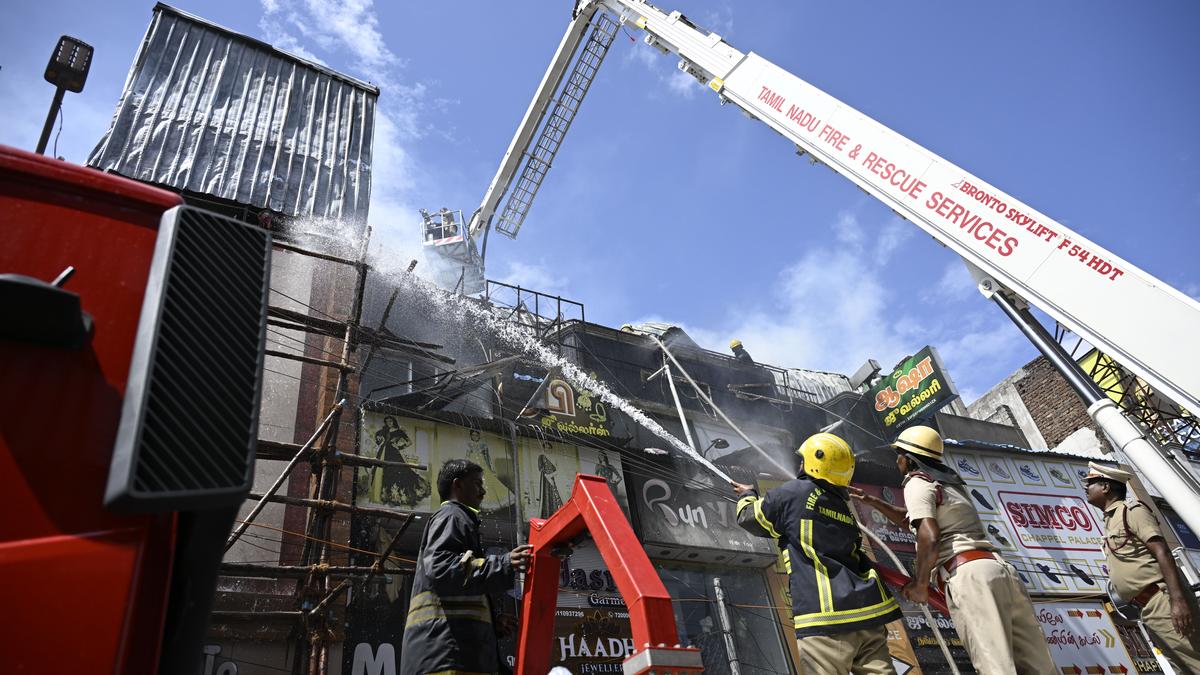By Majnu Babu,Sumit Jha
Copyright thesouthfirst

‘We have nothing to lose’: Why 2,800 PHC doctors across Andhra have gone on strike
At the heart of the current dispute was the state government’s decision to reduce the in-service quota for postgraduate medical admissions in clinical disciplines from 20% to 15% for the 2025-26 academic year.
Synopsis: What began as a dispute over postgraduate seat reservations has now evolved into a comprehensive demand for a resolution for multiple long-pending grievances affecting over 2,800 doctors serving in the state’s rural and tribal areas. The strike has affected 1,142 PHCs in the state.
Primary Health Centres (PHCs) across Andhra Pradesh remained paralysed for the second consecutive day on Tuesday, 30 September, as the doctors on strike declared that they are prepared for a prolonged battle.
What began as a dispute over postgraduate seat reservations has now evolved into a comprehensive demand for a resolution for multiple long-pending grievances affecting over 2,800 doctors serving in the state’s rural and tribal areas. The strike has affected 1,142 PHCs in the state.
The Andhra Pradesh Primary Health Centre Doctors Association (APPHCDA) suspended outpatient services on Monday, 29 September, and escalated the strike by halting emergency services from Tuesday, affecting approximately one lakh patients daily.
The move comes after what the doctors described as a year of broken promises and bureaucratic inaction.
A year of unfulfilled promises
“Last year in September, we held a strike for the same reasons. After a month-long protest, the government promised us that it would resolve all the issues we had raised. But even after a year, none of them have been addressed. The same issues remain pending. We are once again requesting the government to resolve them at the earliest,” Dr Vinod Kumar, state spokesperson and treasurer of APPHCDA told South First.
The frustration was palpable among the doctors who felt their concerns have been systematically ignored despite multiple attempts at dialogue.
“Right from July, we have been requesting the government to address our issues. For the past three months, we have submitted repeated representations, but no one has paid any attention. We also served our strike notice well in advance—on 26 September—to the Director of Public Health as well as to all DMHOs,” Dr Kumar explained.
Also Read: More doctors, better doctor-patient ratio in South India
The PG quota controversy
At the heart of the current dispute was the state government’s decision to reduce the in-service quota for postgraduate medical admissions in clinical disciplines from 20% to 15% for the 2025-26 academic year.
The revised policy, approved by Chief Minister N Chandrababu Naidu, reserves 15% of PG seats across seven clinical disciplines—General Medicine, General Surgery, Paediatrics, Gynaecology, Anaesthesia, Emergency Medicine, and Radiology—for PHC doctors, while maintaining 30% reservation in nine non-clinical subjects.
“States like Tamil Nadu, Odisha, and West Bengal provide 50% reservation. Even Telangana offers 20 to 25% clinical PG in-service reservation, while Karnataka gives 30%. Every state has a fair in-service PG reservation system to encourage doctors working in rural areas to continue in government service. That was the original idea behind introducing it,” Dr Kumar pointed out, highlighting the disparity with neighbouring states.
The fluctuating policy has left doctors feeling betrayed. “In 2023, Andhra Pradesh had 30% reservation in clinical branches and 50% in non-clinical. But it was reduced to 15% in clinical, limited to just four branches—Medicine, Surgery, Gynaecology, and Paediatrics. After our protest last year, it was revised to 20% in clinical and 30% in non-clinical. Now again, this year, the government has reduced it back to 15%, though across seven branches,” he explained.
The doctors were particularly aggrieved by the lack of consultation. “According to GO 127, issued on 1 October 2023, any decision on PG quota should be taken only after consultation with stakeholders—that includes our association. But this time, we were not consulted at all. Our opinion was completely ignored,” Dr Kumar said.
Also Read: Task force moots e-complaint portal, more PG seats
Addressing government’s concerns
The government argued that many doctors used PHC service merely as a stepping stone to secure PG seats and they did not return to rural service after completing their postgraduate studies. Dr Kumar strongly refuted this claim.
“Yes, there may be a very small percentage of such cases, but it is negligible—just 2% to 3%. For the vast majority, this is not true. Moreover, every in-service doctor taking PG admission signs a strict bond with the government. This bond clearly states that we will serve for 10 years in government service after completion of PG,” he clarified.
The consequences for breaking this bond are severe: “Repay the entire salary received during PG, which amounts to around ₹40 lakh. Pay a penalty of ₹50 lakh. Face cancellation of their PG medical license itself. These are very strict conditions. The government already has full authority and legal powers to act against any violators. Given this, why would any doctor risk their degree, their license, and such a huge financial penalty?”
He added, “The government’s argument is being exaggerated to deny us our rightful quota. Pointing to a negligible minority to punish the majority is unfair.”
Also Read: 1 in 4 MBBS students has mental disorder
Beyond PG seats: Five critical demands
While the PG quota issue has captured headlines, the doctors’ grievances extend far beyond admission reservations. Dr. Kumar outlined five key demands that remain unresolved despite last year’s assurances.
Promotions: “Many doctors who have been working for more than 20 years have still not been given any promotion. Currently, the promotion line is stuck with doctors recruited in the year 2000. In contrast, in the Directorate of Secondary Health—which includes district hospitals, area hospitals, and community health centres—doctors are being promoted just two years after completing probation. But under the Directorate of Public Health, where we work, the situation is very different. Even doctors who have been serving for 25 years have not been promoted,” he said.
Tribal allowances: “Compared to area and district hospitals, PHCs are often located in more remote and interior tribal areas, at the foothill level. Yet, tribal allowances are being given only to doctors under Secondary Health. We believe the same should be extended to Public Health doctors,” Dr. Vinod Kumar explained. The financial implication is modest—about ₹10.4 crore per year for approximately 400 doctors working in tribal regions. “Secondary Health doctors are given 30% of basic pay as tribal allowance, and since both cadres are recruited through the same board and notification, with the same qualifications, the same benefit should be extended to us as well.”
COVID-batch increments: “The fourth issue is increments for doctors recruited in 2020 during COVID. They were appointed on a consolidated pay basis. After probation, they should have been given increments—it’s a basic employee right. This is a one-time settlement and would cost around ₹1.2 crore, but even this has not been addressed.”
Sanchar Chikitsa allowance: “It was launched in 2022, and the government promised ₹5,000 per month to cover travel expenses. PHC doctors are required to visit every village and conduct medical camps. While one doctor stays at the PHC, another travels to different villages. But for the past three years, no allowance has been paid. We have been meeting these travel expenses from our own pockets,” Dr Kumar revealed.
Also Read: Alarming 37,667 medical students and faculty call for help in NMC survey
Government’s defense and response
Commissioner of Health and Family Welfare G Veerapandian defended the government’s position, calling the protest unjustified.
“It is not reasonable for PHC doctors to protest. Keeping in mind the vacancies that may arise in teaching, social, area, and district hospitals in the future, the government has fixed the in-service quota seats,” he stated.
He emphasised the long-term planning: “Over the next three years, nearly 1,000 in-service quota PGs will join duty. From November this year onwards, they will start joining in phases. As a result, by 2027 there will be no vacancies in the Directorate of Secondary Health hospitals, and from 2028 onwards, no vacancies in teaching hospitals either.”
Veerapandian appealed to the doctors: “While requests to increase in-service quota seats considering field-level needs will be reviewed, it is not right for PHC doctors to boycott duties and cause inconvenience to patients. I appeal to the PHC doctors, on behalf of the government, to call off the agitation and resume duties immediately.”
To ensure continuity of healthcare, the Medical and Health Department has deployed MBBS doctors from teaching hospitals, social health centres, area hospitals, and district hospitals to PHCs. Orders were issued late Monday night for the deployment of doctors from a pool of 1,014 PG students, senior residents, and MBBS tutors in teaching hospitals, along with 1,017 MBBS doctors working in other facilities.
The Health Department has also imposed strict measures, prohibiting other PHC staff from taking leave and directing Community Health Officers to remain at Health & Wellness Centres. Additionally, 108 ambulance staff have been instructed to coordinate with local hospitals.
Multiple rounds of negotiations have failed to break the deadlock. “We have had multiple rounds of talks with the government—last Thursday, and again yesterday—but there has been no clear or written assurance. Everything has only been oral promises, just like last year, and none of those were fulfilled. One full year has already passed, yet nothing has moved,” Dr. Vinod Kumar said.
The association has planned an escalating series of protests. “From 1 October, we announced we would attend only emergencies. On 2 October, we called for a Chalo Vijayawada protest, and from 3 October, we will participate in a hunger strike,” he announced. District-level sit-ins have been scheduled for 30 September, 1 and 2 October.
The human cost
The strike is expected to severely impact healthcare delivery in rural and tribal areas where PHC doctors serve local communities. Services at 10,051 Health and Wellness Clinics are also likely to be disrupted, as they cannot function independently without PHC medical officers.
According to government data, 272 PG seats have been earmarked for PHC doctors this year—154 clinical and 118 non-clinical. In 2024, the clinical quota increase helped 312 government doctors secure PG admissions. However, while most clinical seats were filled, nearly half of the non-clinical seats remained vacant, with only 53 of 104 seats utilised.
The doctors maintained they had exhausted all peaceful options. “We have given the government ample time. Since July, we have met officials, submitted memoranda, and even waited through months of inaction. Now, as citizens of a democracy, it is our right to protest. We are exercising that right only after exhausting all options,” Dr Kumar asserted.
(Edited by Majnu Babu).



